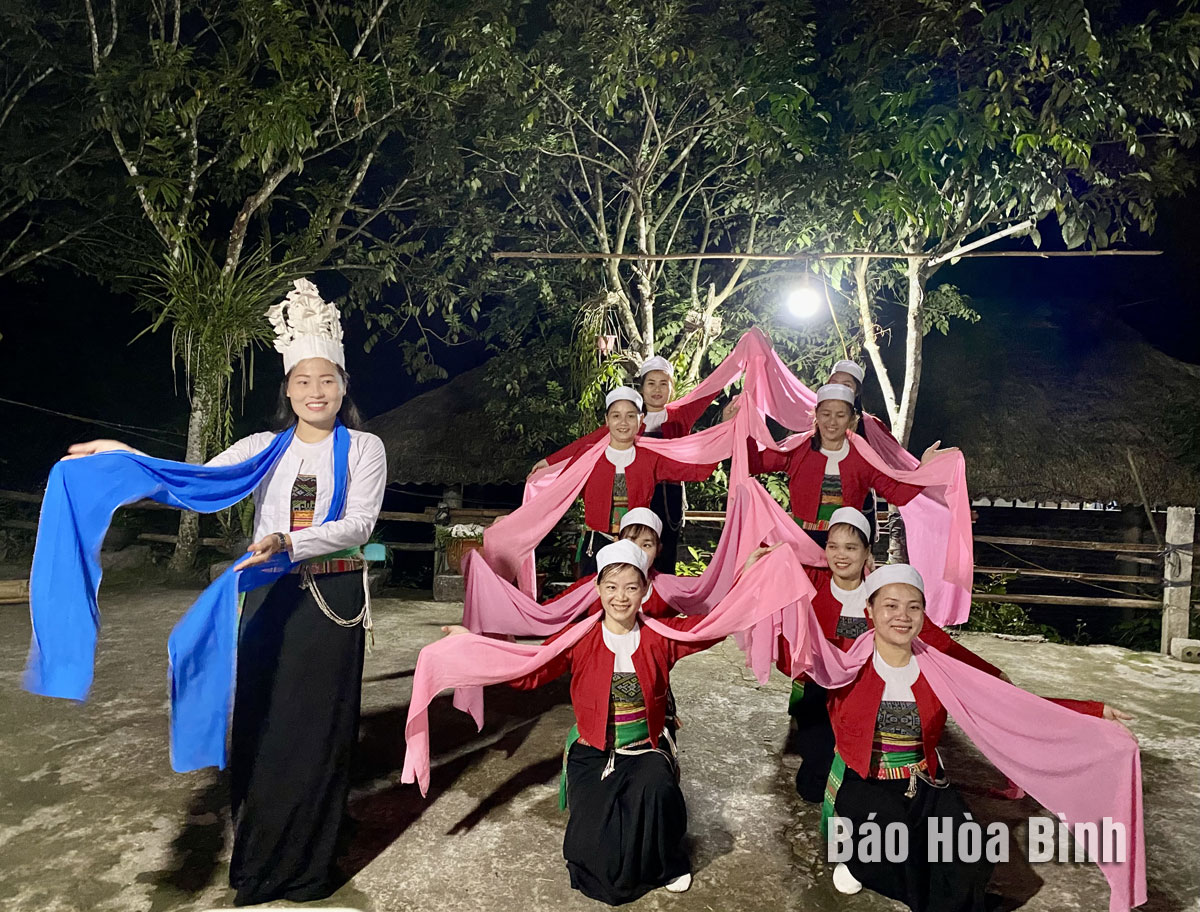
Binh Thanh commune in Cao Phong district of Hoa Binh province has been taking advantage of local cultural identity and diverse natural landscapes to boost its tourism development.
The musical team of Mo hamlet in Binh Thanh commune
performs a traditional dance to serve tourists.
Dinh Van Lan, Vice Chairman of the commune People's Committee, said that
developing tourism associated with cultural preservation, particularly Muong
ethnic culture has been included in the locality’s socio-economic development
plans.
Many activities have been taken to preserve and promote cultural
values in the community.
The commune annually organises festivals and cultural exchanges
at the grassroots level and culture-tourism weeks to introduce and promote
local culture, which helps attract visitors. On major national holidays or
important events, the commune also holds cultural, artistic and sport
activities.
Particularly, the commune organises an art and sport exchange
programme to celebrate the founding anniversary of the Party and spring yearly.
This year, on the 7th day of the Lunar New Year, besides artistic performances,
there will be a volleyball tournament and folk games such as throwing a sacred
ball through the ring (nem con), tug of war and stick pushing.
A musical team in Mo hamlet regularly performs to serve
tourists. In addition, a Muong language-singing club brings together 20 members
who share love for the art of singing Muong songs.
The commune implements communication activities to raise the
awareness of ethnic communities in preserving cultural identity, particularly
their language, costumes, and stilt houses. It also pays attention to directing
the management of the construction of a community-based tourism area in Mo
hamlet.
A total of 36 households in the hamlet are participating in
community tourism. Some businesses are investing in and promoting eco-tourism
such as Lahills Hoa Binh, Moda Group, Beru Group, and Mo hamlet community
tourism cooperative.
To gradually form community cultural tourism products, the
commune directed the restoration and development of traditional occupations and
promoted local products such as Da River fish, chickens, pigs, fruits and
vegetables to supply to restaurants and business households in tourist areas.
A diverse chain of eco-tourism and resort destinations concentrated in Hoa Binh city and the districts of Tan Lac, Da Bac, and Luong Son… Along with the launch of several key high-quality resort tourism projects, these developments have reshaped the landscape and enhanced the appeal of Hoa Binh as a travel destination.
Boasting diverse terrain, a mild climate, and rich natural resources, Cao Phong district is increasingly asserting its place on Vietnam’s tourism map, attracting both domestic and foreign visitors. The district is renowned for its stunning landscapes, majestic mountains, a crystal-clear hydropower lake, and the unique cultural identity of local ethnic groups.
With its pristine landscapes, unique cultural heritage of Muong ethnic minority, and an expanding range of visitor experiences, Tan Lac district of Hoa Binh has fast become a captivating destination for both domestic and international tourists.
Until now, Sung village in Cao Son commune, Da Bac district remains the only Dao ethnic community in Hoa Binh province to develop a community-based tourism model. Beyond its untouched natural landscapes, cultural identity serves as the cornerstone attraction for visitors.
Alongside the diverse cultural identities of the Kinh, Muong, Tay, Thai, Dao, and Mong ethnic people, Hoa Binh province is also renowned as the "capital" of the northwestern Vietnamese cuisine, offering unique and distinctive dishes. At festivals, during Lunar New Year (Tet), or on significant family or community occasions, special dishes are prepared, leaving a lasting impression on visitors.
A Phong Linh (Yellow Tabebuia) flower garden in Thang village, Thach Yen commune, Cao Phong district is currently in full bloom, drawing a large number of visitors.



